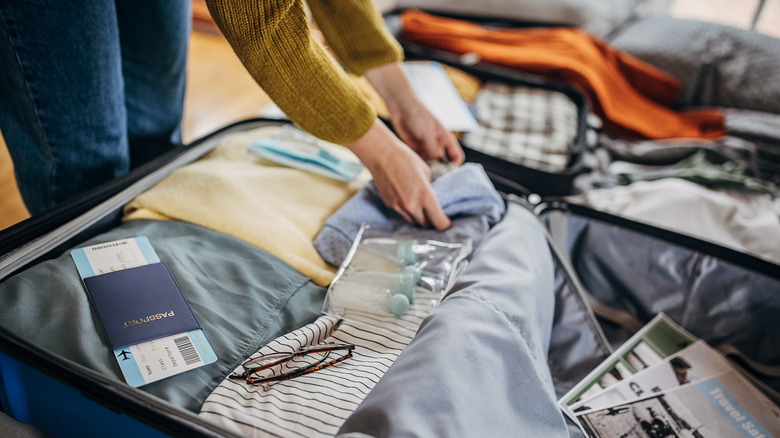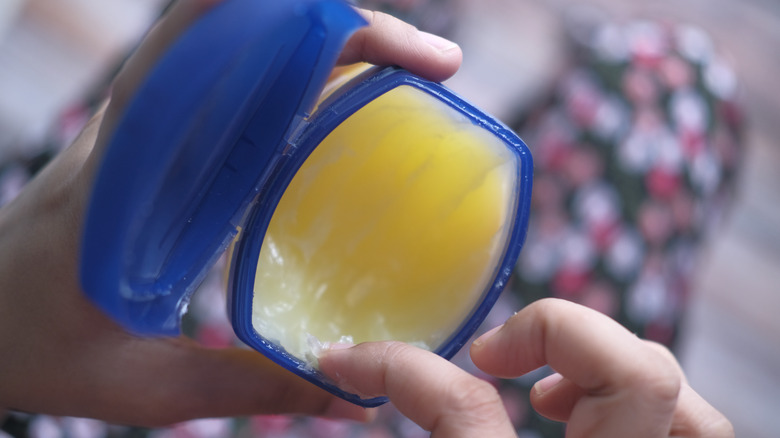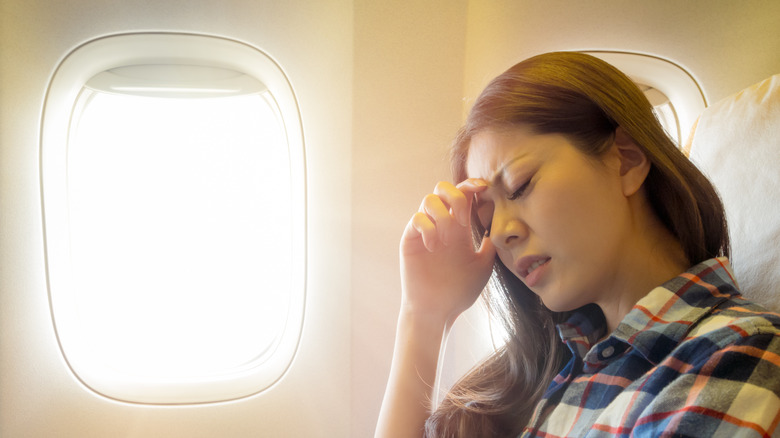Why You Should Pack Vaseline For Your Next Flight
Planes are notorious for having dry environments, with humidity levels averaging below 20% — lower than the Sahara Desert. Suppose you, like many others, are sensitive to arid plane air and suffer from dry nasal passages, difficulty breathing, and migraines. In that case, there is a simple yet effective solution for you: Vaseline.
A type of petroleum jelly, Vaseline is a topical ointment that has been around since 1870 and is known for its healing and cosmetic properties. Various other brands produce petroleum jellies, such as Aquaphor, Carmex, and Neosporin; however, Vaseline is heralded as the household and medicine cabinet staple. It can help with everything from chapped lips to skin rashes to treating dry scalp — and now, for the travelers of the world, it can aid with the accursed dry airplane environment and minimize the havoc it causes to our bodies, more specifically, our noses.
Ensure that the petroleum jelly you bring onboard in your carry-on doesn't exceed the airplane's 3.4-ounce liquid, gel, and aerosol restriction — yes, although it's technically semi-solid, Vaseline still counts. But don't fret! Vaseline and other petroleum jelly brands produce travel-size and even pocket-size options so you can ensure a hassle-free airport security experience.
Beat the dryness and stay healthy
To combat dry air discomfort during flights, line your nostrils with petroleum jelly before take-off. This hack has proven to be a game-changer for frequent or long-haul flyers who struggle with the effects of low humidity on planes. Applying a thin layer of Vaseline to the inside of your nostrils, using a Q-tip or clean finger creates a protective barrier that helps retain moisture and combat dryness. You can reapply as needed throughout the flight.
The awfully low humidity levels and changing air pressure in the cabin inflame the delicate mucous membranes of your nose and sinuses. This lack of moisture disrupts your nose's natural cleaning processes and mucus flow and invites unwanted bacteria to become fellow passengers in your nasal cavities. Vaseline could very well save you from this fate on your next flight.
Users of this method have reported a noticeable decrease in nasal dryness during flights. The Vaseline hack helps you breathe better, thus curbing any potential headaches or migraines and improving your overall well-being on the flight. Additionally, some claim they get sick less frequently after incorporating this simple travel hack into their routine. While it may not be a cure-all for airplane-related ailments, the benefits are compelling.
A word of caution
Vaseline can be a helpful remedy for dealing with dry plane air, but it's essential to use it judiciously and be aware of its limitations. Keep in mind that most germs are found on surfaces around the airplane, such as armrests and tray tables, rather than in the cabin air. While Vaseline may provide some protection against dryness, it may not be as effective in preventing illnesses caused by surface contamination.
Moreover, using petroleum jelly in your nose too often over many months can potentially result in blockage or lung problems. It's best to use it in moderation and consult a healthcare professional if you have any concerns. If, in the rare case, you get an adverse reaction to Vaseline, such as redness, itching, or swelling, please stop using the product. If you know you are allergic, some alternatives to petroleum jelly that can help with in-flight nasal discomfort are saline nasal spray, decongestant spray, damp wipes, or a trusted hypoallergenic moisturizer.
Remember that maintaining good hygiene, staying hydrated, and following other preventive measures are equally important in ensuring a healthy and pleasant flight experience. So, as you plan your next flight, pack your trusty Vaseline or a travel-size variant to conquer the parched airplane desert and make your journey in the clouds pleasant and breathable. With some preparation and this handy hack, may your next flight be free from dry air woes!


